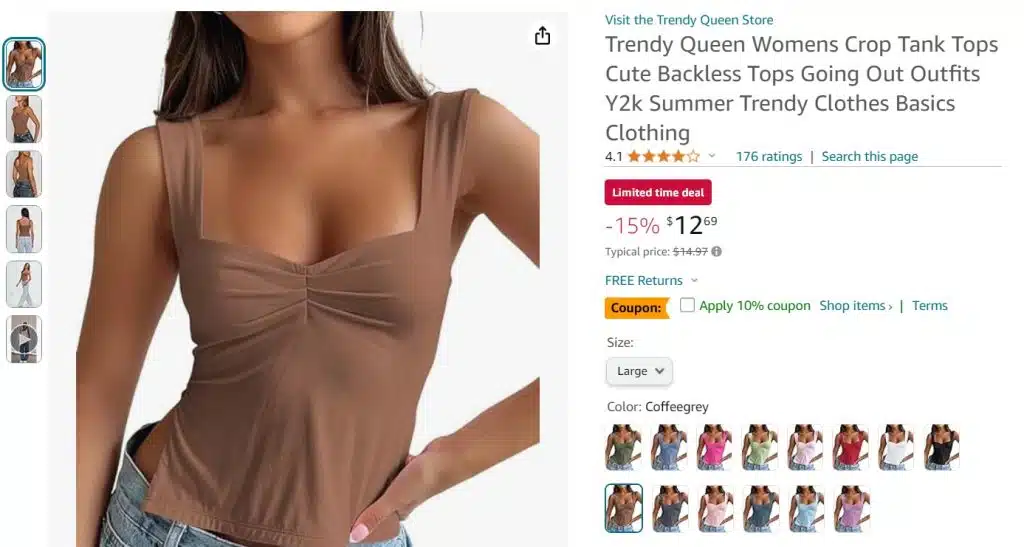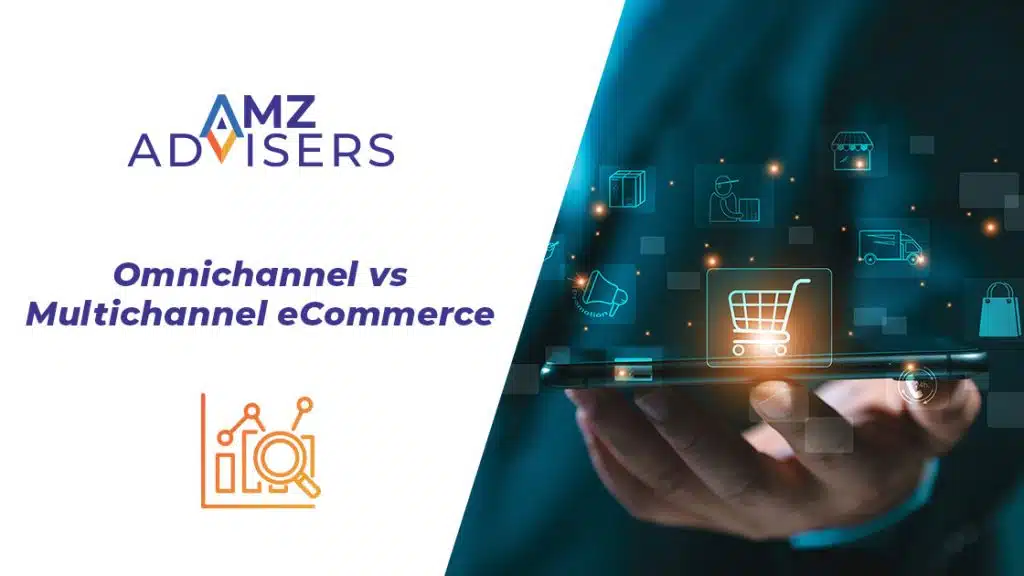With so many ecommerce platforms, it can be difficult for consumers to know where to shop. But most buyers consider one factor when choosing an ecommerce platform: price. 82% of consumers say price is an important factor when shopping online.
This is why expert pricing is the cornerstone of Amazon’s success. Amazon uses big data to make pricing decisions and keep up with cost fluctuations. It should be no surprise that this method works—Amazon sells 7,800 products every minute.
This also makes Amazon pricing difficult for sellers to navigate, however. Luckily, we’ve set up everything you need to know about the Amazon pricing strategy and how to leverage it.
What Is the Amazon Pricing Strategy?
So, does Amazon do price adjustment? Yes, and its stategy is simple: offer the lowest price possible. This is the secret to Amazon’s success, expressed by the flywheel model. But Amazon is also crafty in how it approaches its savings.
It uses machine learning to monitor pricing trends and will change a product’s price based on market demand and competition.This is known as the Amazon dynamic pricing strategy. Amazon changes product prices frequently to ensure customers always get the best price.
It’s important to note that Amazon never compromises product quality and value. Regardless of the price you pay, you can be confident you’re getting a high-quality product.
Why Does Amazon Change Its Prices?
Dynamic pricing, also called fluctuating prices, is a common Amazon pricing strategy. But why does Amazon do this?
Transparency
Before discussing this Amazon pricing strategy, it’s important to understand the significance of transparency.
Before making a purchase, many buyers compare prices on different platforms. The retail giant understands this and will fluctuate prices to keep up with market demands.
The Amazon price adjustment strategy keeps them at the top of the game because it ensures customers don’t pay top dollar for their favorite items.
Savings
There is a cost-of-living crisis. The average household spends $61,334 on basic living expenses every year.
In addition, the average 35-year-old millennial has 30% less wealth than baby boomers did at that age. The average young person doesn’t have much money for leisure spending and what they’re earning goes toward basic living needs.
Fortunately, the pricing strategy of Amazon offers a solution. The ecommerce giant is a one-stop shop for young people looking for convenience and cost savings.
Since Amazon uses big data to predict and adjust prices, Amazon shoppers can save money on essential items such as groceries, personal care items, over-the-counter medications and first aid, health items, baby and pet products, and more.
Loss-Leader Strategy
Loss-leader is another common Amazon pricing strategy. With this strategy, Amazon reduces the price of a product to attract customers to your store.
You’ll know this is a loss-leader product since Amazon will display the new price as a percentage off, compared to the original price. Since customers save money on one item, they may be more tempted to purchase a full-priced product.

Take a look at the woman’s blouse that’s on sale. Since this is a fashion store, customers may be tempted to return to the store and purchase pants or shorts to match the blouse.
If you continue using the loss-leader strategy, customers will return to your store to purchase fashionable outfits at a lower price.
Other Types of Amazon Pricing
Fluctuating and dynamic pricing isn’t the only Amazon price adjustment policy. Machine learning also uncovers different pricing opportunities that can fit their short and long-term goals.
Here are other examples of Amazon pricing:
- Price skimming
- Penetrative pricing
- Cost-plus pricing
- Value-based pricing
- Peak (“surge”) pricing
- Economy pricing
- Bundle pricing
How to Leverage the Amazon Pricing Strategy
Now that you know how the marketplace changes and adjusts prices, you can create your own Amazon seller pricing strategy. Here’s how to sell your products at the best price.
Competitively Price Your Most Popular Products
Instead of considering your products “cheap,” consider price adjustments as an Amazon pricing strategy. When you use competitive pricing, you lure shoppers to your store with the promise of savings on a high-quality product.
That said, you can still profit in many ways. Referring to the Loss-Leader Strategy, customers will be more tempted to purchase something else. You’ll not only up-sell customers but will increase sales on some less-popular products.
You should also pay attention to your profit margin on Amazon and ensure you still earn more than you invest.
That said, competitive pricing works best on your most popular products. These are the ones that customers are most satisfied with, increasing your ratings even further. And when you get more sales, Amazon will likely promote and advertise these products more.
Cross-Selling and Up-Selling
We’ve mentioned these terms before, but what do they mean? Cross-selling is when sellers offer additional products that complement items you have in your cart. Examples include offering a game controller when buying a video game console.
Up-selling is when you entice customers to buy a better version of an item they have in their shopping cart. Examples include buying a cat water fountain instead of a cat water bowl.
Both of these tactics will increase conversion rates on Amazon. Use the Amazon pricing strategy to attract customers and encourage cross-selling or up-selling with additional product recommendations.
Conduct Competitor Research
A tried and true pricing method is discovering what your closest competitors are charging. This is especially easy on Amazon; if you don’t know your competitors, you can search for your category or product keywords and find the other brands that appear.
Customers shopping for products on Amazon will likely compare your store to your competitors’. If your prices are cheaper, buyers will naturally turn to your store. This will help increase repeat purchases and generate loyal customers.
Basket-Based Discounts
Basket-based discounts are price reductions applied to personalized product recommendations. This takes typical competitive pricing further since you’re applying discounts to individual customers.

How does Amazon determine personalized pricing? Their algorithm tracks purchase history, previously used discounts, search history, and more.
When customers open Amazon, they see recommended products tailored to their interests and even past purchases they can buy again. From here, Amazon offers the best discount to entice them to order the item.
Dynamic Pricing
You can also use dynamic pricing to find the optimal cost based on demand. In other words, this strategy doesn’t necessarily use the cheapest or most expensive price. Dynamic prices identify the optimal price for a product based on demand.
How do you find the optimal price of a product? This requires a lot of research and testing. You can use some of the methods mentioned previously, such as competitor research, though this is time-consuming.
Sellers who want to use this strategy should use price tracking software to identify the optimal price of a product in a given time.
This strategy has downsides. Customers will pay different prices for their favorite products at different times, which can confuse and annoy buyers.
Are You Struggling With Your Pricing on Amazon?
If you sell your products on Amazon, knowing the Amazon pricing strategy and how to leverage it is helpful.
While Amazon aims to offer the lowest price possible, their pricing is more complex than this. Amazon uses different pricing strategies―mainly dynamic pricing―to offer the best price based on demand and competition.
Have you used these pricing strategies and still struggle to attract sales? Our Accelerator service includes many tactics, such as competitor research, to help you offer the best product price and gain success on Amazon.
Author
 Stephanie Jensen has been writing ecommerce content for seven years, and her copy has helped numerous stores rank on Amazon. Follow her on LinkedIn for more insight into freelance writing and creating high-quality content
Stephanie Jensen has been writing ecommerce content for seven years, and her copy has helped numerous stores rank on Amazon. Follow her on LinkedIn for more insight into freelance writing and creating high-quality content



